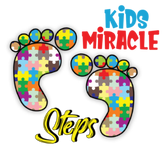One out of the many child development factors acquired in early childhood is learning to speak and communicate. For most children, speech skills are developed at a specific age range. Some can babble at 4 months old, while others can respond with words during their first year.
As said by the American Academy of Pediatrics (AAP), most children begin talking at the age of one or two years old. For children with special needs, they may be developmental delays. If you think your child falls within the normal age range for speech, you can engage with these ten speech therapy exercises at home.
Understanding speech therapy
Speech therapy is an intervention done by speech and language therapists to improve a child’s speech and language skills. It’s usually used with things like fluency.
Speech therapists also help children to understand comprehension. Overall, the goal is to improve the child’s communication skills in a clear and understandable way.
We have licensed speech therapists aiding in communication skills, speech and speaking, improving oral engine strength, and more. Our treatment-based strategy will hone your child’s speech skills. You can set an appointment with us to discuss your child’s needs.
What happens during speech therapy?
If a child has signs of speech or language delay, it’s essential to get the opinion of a professional, like a speech therapist.
During speech therapy, speech therapists assess the condition of your child to determine the best possible options. There are several speech exercises available and that we personally use such as:
- Using visual boards
- Writing, signing, or typing
- Facial exercises
- Modulating voice tones
Through the help of speech therapy and therapists, children with medical complex conditions will become aware of the necessity of speaking and comprehending. Additionally, we’ve compiled a list of ten speech exercises that you can do easily at home.
The right approach to speech therapy
1. Look at your options
You don’t have to do it alone. If there are available resources in your location, you can seek assistance. Our center is conveniently located at Palm Avenue, Hollywood, Florida. Check us out if you’re near the area or schedule a personal appointment.
What you can do is consult with your kid’s pediatrician, if you believe they’re experiencing speech delays, a wise move is to do an intervention as early as possible.
2. Cut out the pacifier
If your child is accustomed to having a pacifier, we suggest cutting it out. It can be very hard to speak with a pacifier. It can be hard to break the habit, but it’s harder to not be able to speak well.
3. Initiate a conversation
Start conversing with your kid from birth. When they babble, respond back. This shows the importance of talking and conversing back. But don’t force them to speak! It takes time and patience.
4. Make it fun with a microphone
You can also do speech therapy activities like singing. If you have a microphone, the perfect time to use it would be now. Singing helps kids encourage themselves to speak. The lyrics of the songs also help in memorization. Choose songs that are child-friendly.
5. Read books
Even when kids don’t seem to understand the context of the books, always encourage them to read. Reading books encourages children to learn. It’s also an opportunity to expand their vocabulary. You can read books with illustrations and describe them to increase engagement.
6. Start with daily practice
Another speech therapy technique you can do at home is by practicing daily. If your child can’t pronounce the letter “s,” encourage them to say it daily. You can also make it easier for them by incorporating syllables.
7. Keep minimal distractions
A study from 2009 said that too much usage of television can delay language skills. If your kids can’t seem to stay away from television or iPads, it’s time to limit their screen time. Kids are more likely to speak when they’re actually being talked to.
8. Make room for silly noises
You don’t have to be strict with terms and phrases. Make room for silly noises! This practice helps in speech therapy for kids to pronounce and understand actual words.
9. Describe surroundings
If you run errands with your kids, take time to describe where you’re going, what can they expect, and why you’re doing them. For example, if you’re going to the grocery store, you can describe the fruits and vegetables, milk, and other food available. It helps them understand the reason you’re doing it.
Make your descriptions simple so they can easily understand.
10. Listen!
Sometimes, we all just need to listen. Let’s drop what we’re doing, important or not, and listen to what they’re trying to say. If you’re conversing with them, give time for them to think of a response.
Learning starts at home
The activities you do at home play an important role in your child’s development. We highly encourage doing speech therapy for children wherever you are -- at home, at the grocery store, or during a ride home.
Besides speech therapy at home, you can also seek professional help in our centers. Your child wants to communicate and our speech therapists can make that happen. You can book an appointment with us now.
How Kids Miracle Steps can help
We’re committed to providing the highest levels of care, compassion, and love to each child, adult, and family. We meet our objectives by focusing on the unique needs of our patients, helping children live their healthiest lives and providing exceptional and innovative services. Learn more about Kids Miracle Steps for Children.
We’re keeping all lines open for messages. You may call us at (754) 219-9431 or visit our website www.kidsmiraclesteps.com to schedule an appointment. We also offer in-person or virtual tours.
Enroll now! Schedule an appointment today at www.kidsmiraclesteps.com/appointment.

